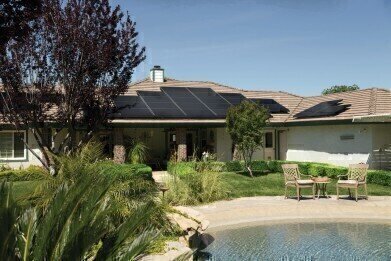Environmental Laboratory
What are Photovoltaic Cells?
Apr 01 2015
The traditional way to harvest solar power is through the use of solar panels, which convert light energy into heat to produce hot water or steam. This in turn powers pistons, from which the electricity can be harvested. The global preoccupation with finding sustainable and renewable methods of generating green energy led to predictions of a boom in the solar panel industry as far back as 2010, and its reduced cost and increased efficiency have only augmented its popularity in the intervening years.
However, what if we could cut out the middle man of heat energy and convert the rays of the sun directly into electricity? That’s exactly what photovoltaic cells are designed to do.
How Does it Work?
The device works mainly through a combination of silicon and other, impure materials, such as phosphorus or boron. Silicon is chosen because it is an efficient conductor of electricity – giving it the name “semiconductor” – and then the impurities are added atop.
Then, when the rays of the sun hit the photovoltaic panel, the impure additions create the perfect environment for electrons to be released. These bounce among the boron or phosphorus implants at incredibly high speeds, which generates much energy. This in turn causes electricity to be produced, which can then be harnessed and stored.
In fact, photovoltaic cells don’t even need pure sunlight to work – especially for smaller devices. A fluorescent bulb or other type of artificial light source can be enough to power photovoltaic cells, as long as the energy current required to power the appliance is not too large.
An Old Technique Refined
The advent of photovoltaic cells actually goes back quite a while – have you ever used a solar-powered calculator? Because calculators take such a miniscule amount of energy to function, photovoltaic cells have been used in their design for decades. However, new advances in the technology have allowed them to be used on larger and more practical projects.
Indeed, in the third world, such technology could be invaluable. Photovoltaic cells have already been developed which are capable of pumping water from a well, which means the basis of human life can be brought to the surface of the Earth in many communities worldwide, simply through the power of sunlight.
Meanwhile, telephone company British Telecom have developed a model which can be operated purely through the power generated by photovoltaic cells. The cells absorb the sunlight during the day, powering the phone and storing the excess energy generated in a battery. Then, during the night hours, when there is no sunshine, the battery takes over.
In fact, the advances in the semiconductors involved in photovoltaic cells have been so great that they could even be used in houses or factories in the near future to offer domestic or industrial power. Of course, such technology would be entirely at the mercy of the local climate and as a result, would not be viable everywhere. For a more thorough examination of the variables involved, read this article: Climatologic Influences on Photovoltaic Production.
Digital Edition
IET 34.2 March 2024
April 2024
Gas Detection - Biogas batch fermentation system for laboratory use with automatic gas analysis in real time Water/Wastewater - Upcycling sensors for sustainable nature management - Prist...
View all digital editions
Events
Apr 30 2024 Melbourne, Australia
Apr 30 2024 Birmingham, UK
May 03 2024 Seoul, South Korea
May 05 2024 Seville, Spain
May 06 2024 Minneapolis, MN, USA


















